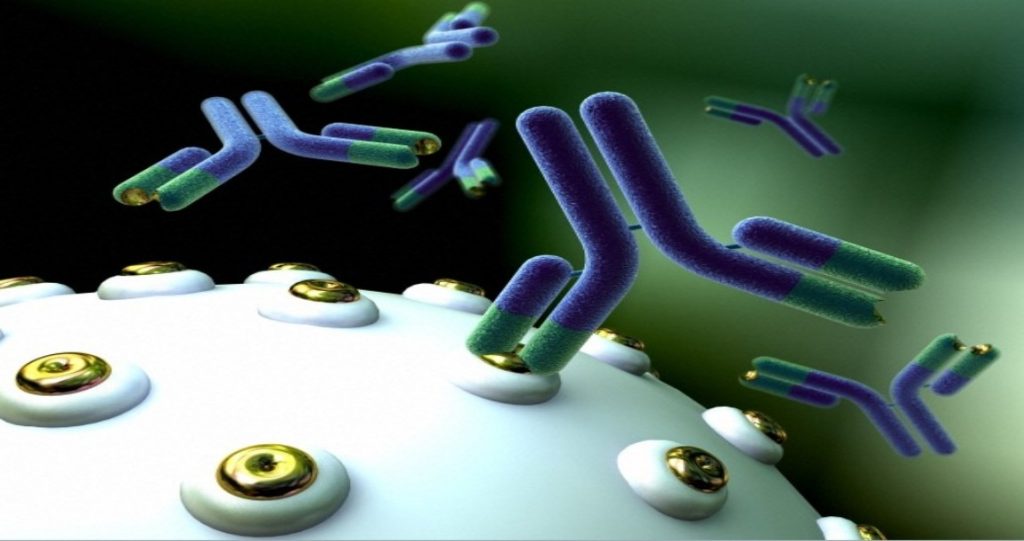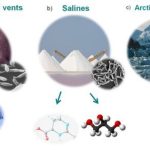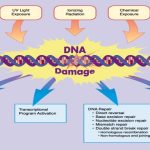Monoclonal antibodies (mAb or moAb) are identical immunoglobulins, generated from a single B-cell clone. These antibodies recognize unique epitopes, or binding sites, on a single antigen. Derivation from a single B-cell clones and subsequent targeting of a single epitope is what differentiates monoclonal antibodies from polyclonal antibodies.
Given almost any substance, it is possible to produce monoclonal antibodies that specifically bind to that substance; they can then serve to detect or purify that substance. This has become an important tool in biochemistry, molecular biology, and medicine.
How to make monoclonal antibodies
Monoclonal antibody generation begins in exactly the same manner as polyclonal antibody generation, with the creation of a robust immune response. However, rather than collecting host serum to recover a population of polyclonal antibodies, monoclonal antibody generation requires collection of the cells that make antibodies, lymphocytes. Once harvested, lymphocytes are immortalized, established as clonal through limiting dilutions, screened for appropriate expression, expanded and preserved as outlined below.
Making monoclonal antibodies continues with lymphocyte harvest

Lymphocyte Harvest
Monoclonal antibodies production requires the collection of the antibody producing cells found in the spleen or lymph nodes.
Fusion to Create Hybridoma Cells
As spleen cells have limited survival times in culture, they require fusion with myelomas, cancerous B-Cells, to create an immortalized hybrid that can undergo many passages in vitro. This is achieved through polyethylene glycol (PEG) or electric pulses both of which disrupt cell membrane and allow merging of two adjacent cells.
Selecting for Fused Hybrids
B-Cell and myeloma fusion is not 100% efficient. Therefore, selecting for myeloma-lymphocyte hybrids is required. Hypoxanthine-aminopterin-thymidine medium (HAT) inhibits DNA synthesis via aminopterin. B-Cells and fused hybrids can overcome culturing in HAT medium as they posses thymidine kinase which allows them to synthesize requisite DNA polymerase precursors from the HAT medium supplied thymidine. Myelomas do not produce thymidine kinase, and consequently do not survive in HAT medium. Although mortal B-Cells contain thymidine kinase, they eventually die off due to limited in vitro replication ability.
Reaching Clonality with Limiting Dilutions
The population of cells which survive selection is still heterogeneous, containing both multiple clones specific to the target antigen and clones producing antibodies with irrelevant specificity. Single cells are required to assure clonality and achieved through limiting dilutions. Limiting dilution is a technique which dilutes plating concentrations of the heterogeneous population such that statistically, each well will contain one cell. In practice, some wells may contain no cells, some a single cell, and others multiple cells. However, repeating this process after rounds of expansion will insure each well contains only the expansion of a single cell, and therefore results in the production of identical monoclonal antibodies. Each potential clone should minimally be tested via supernatant screening in an ELISA against the antigen. Supernatant of clones may also be screened for specific applications prior to moving to the next stage.
Expansion, Cryopreservation, Production, and Purification
After reaching monoclonal status and successful performance in screening assays, selected hybridomas are expanded and frozen down in redundant stocks for safeguarding and preservation. Returning to these monoclonal antibody stocks allows for batch to batch consistency and reliable antibody performance. Hybridomas for antibody production may be expanded in vivo via injection into the peritoneum of a host. This simple technique known as ascites production has fallen out of favor as it may be extremely uncomfortable for the host animal. Alternatively, large-scale in vitro techniques such as roller-bottle production allow for liter-scale production, far outperforming ascites techniques. Finally, simple purification to capture immunoglobulin via protein A/G is all that is required to recover pure antibody as all other unwanted immunoglobulins were removed in the limiting dilution and screening stages.


